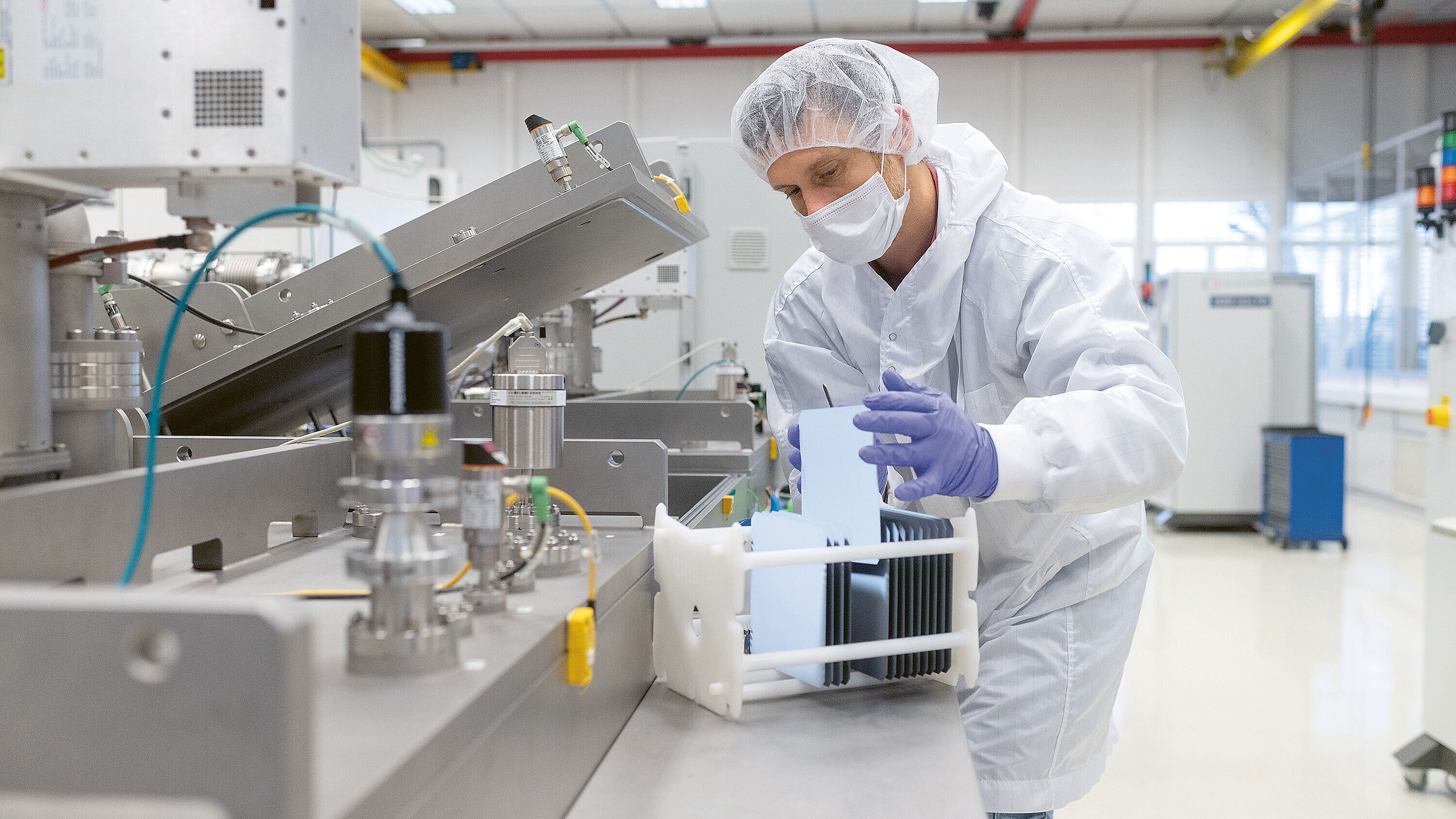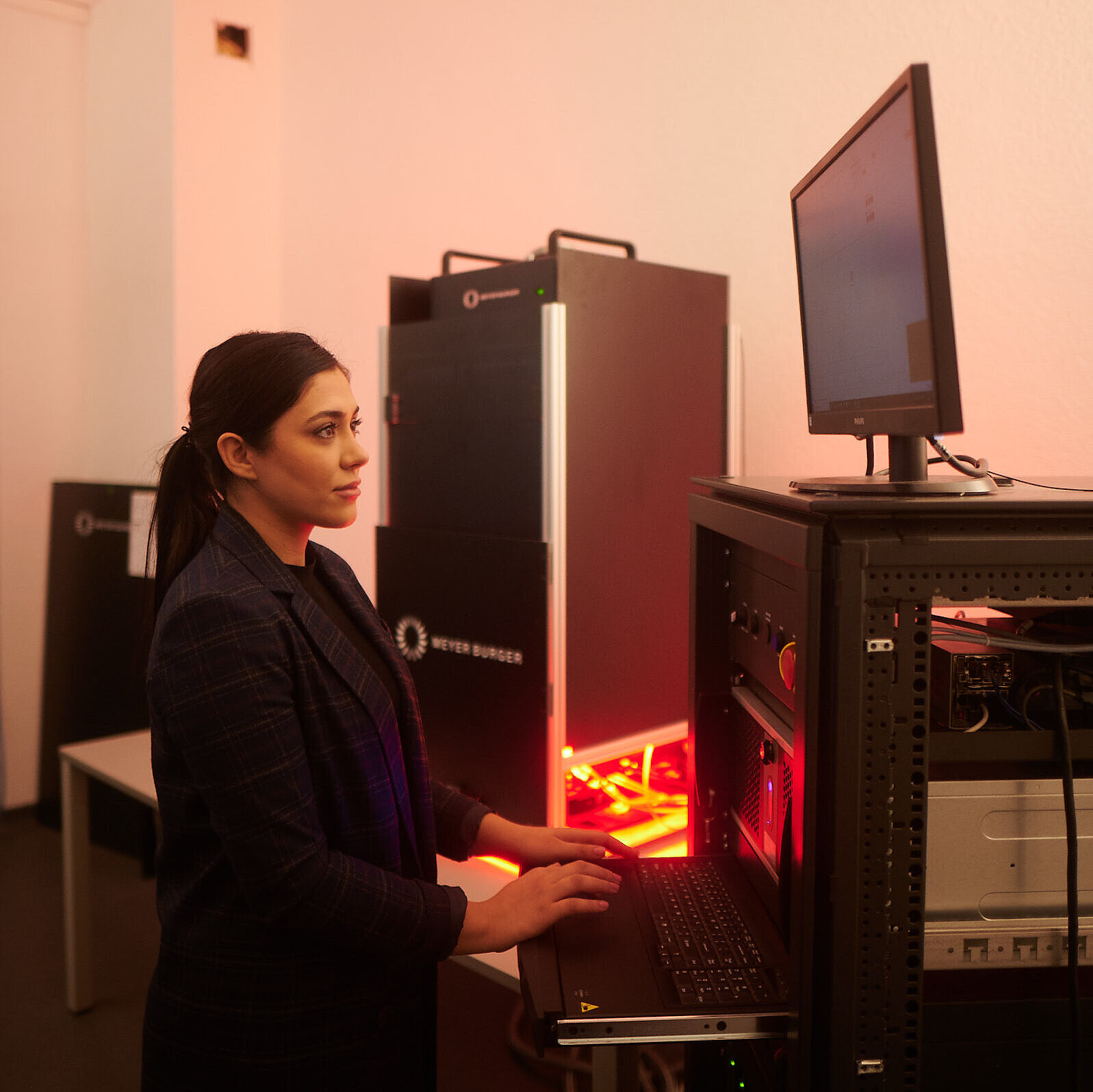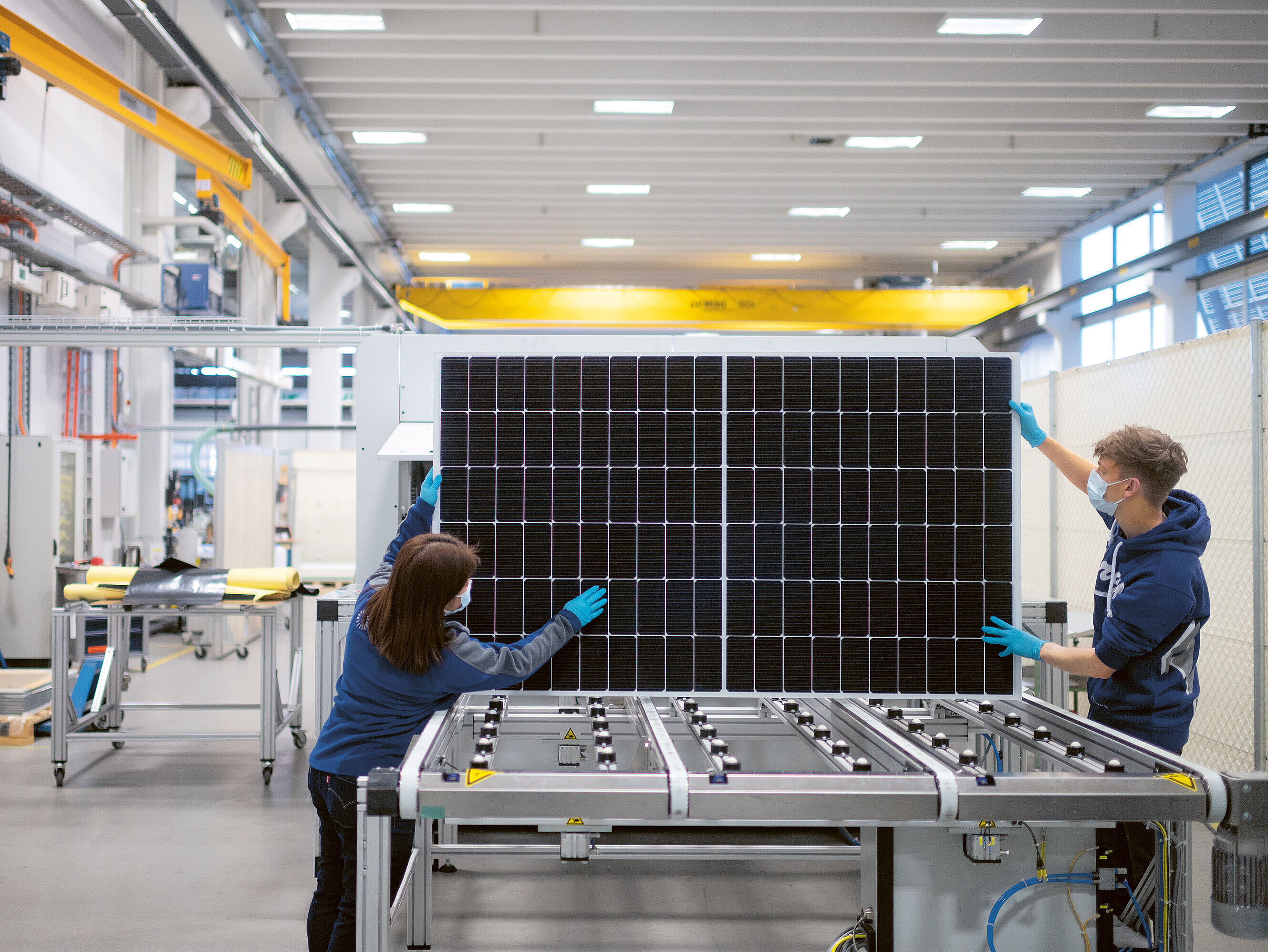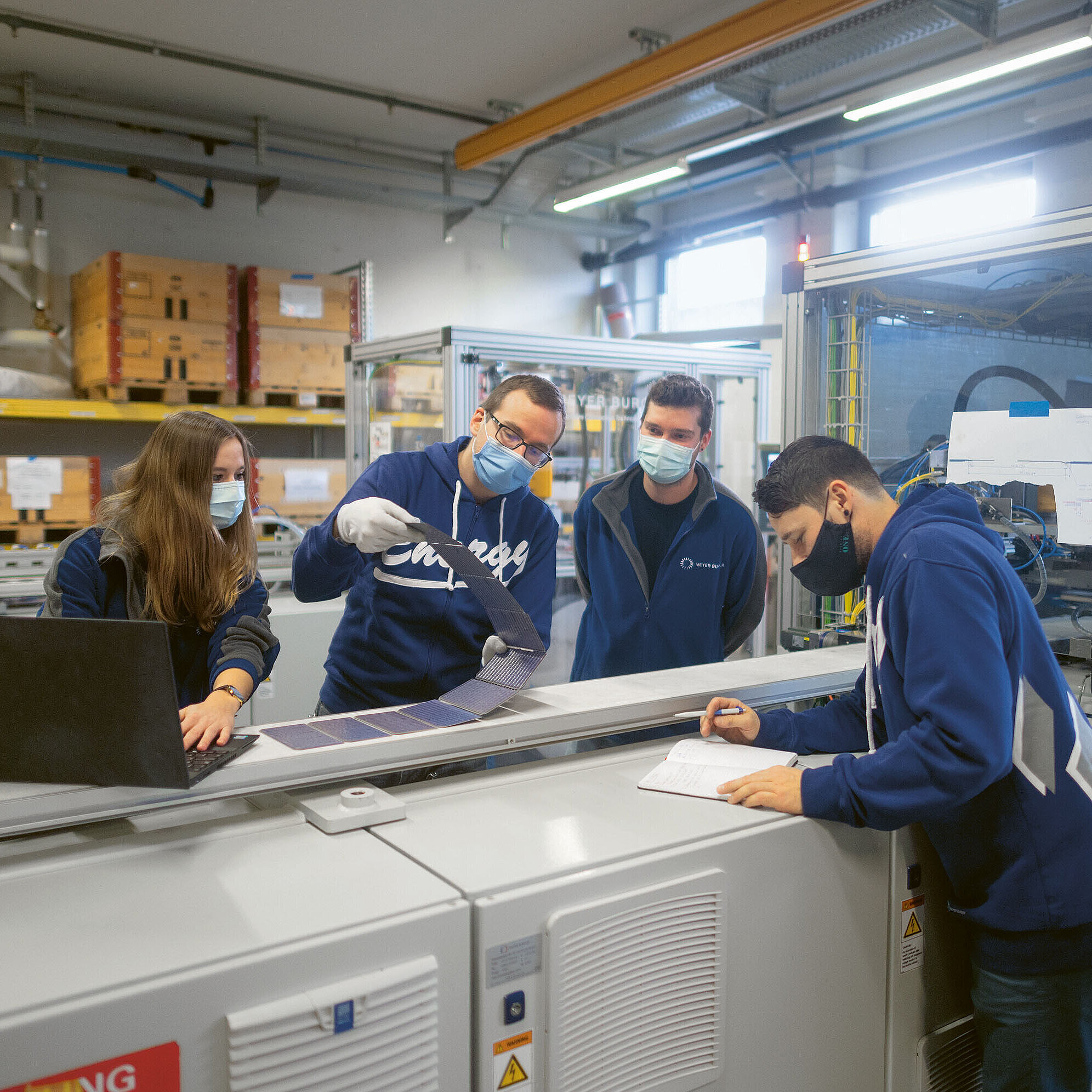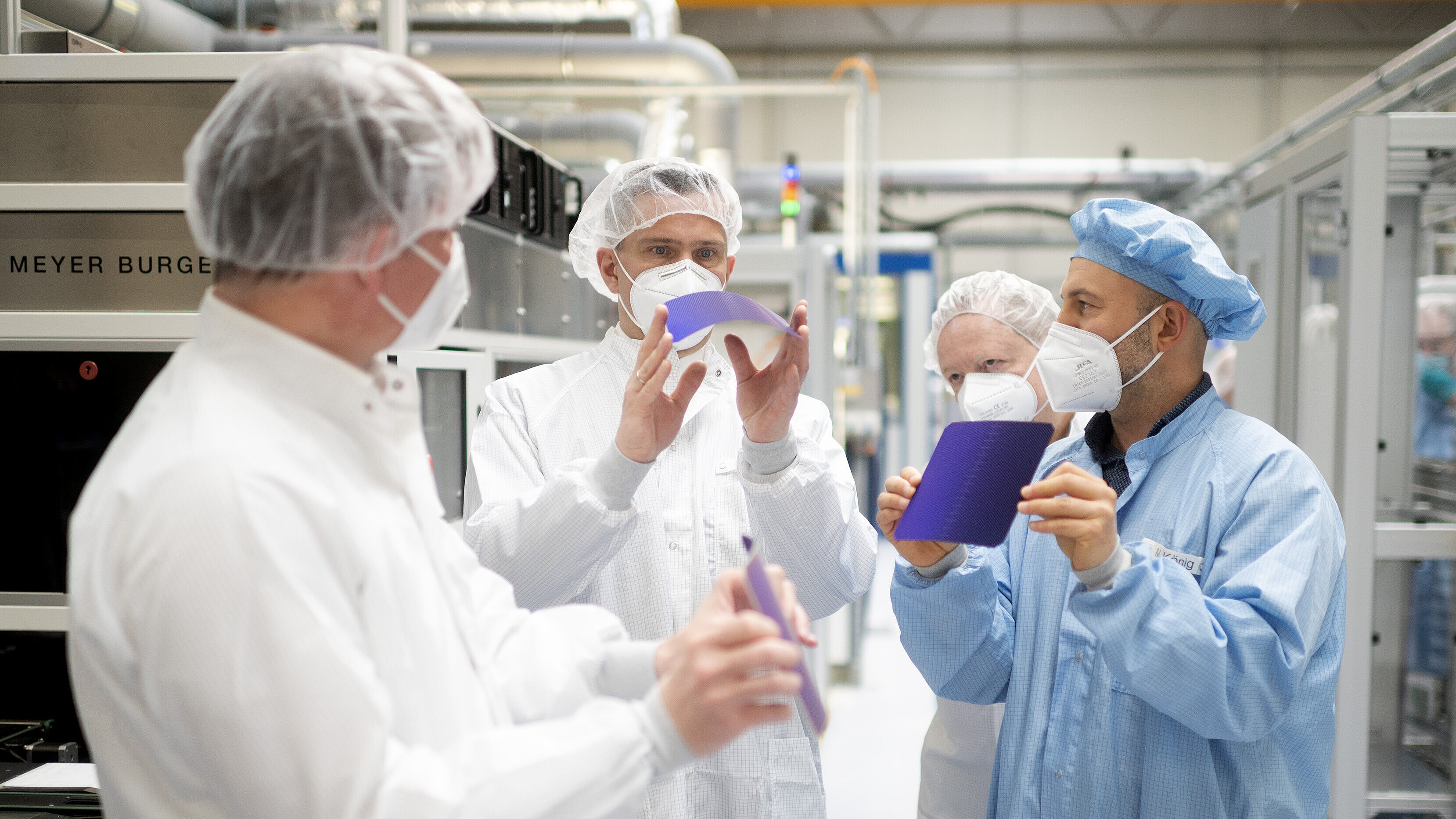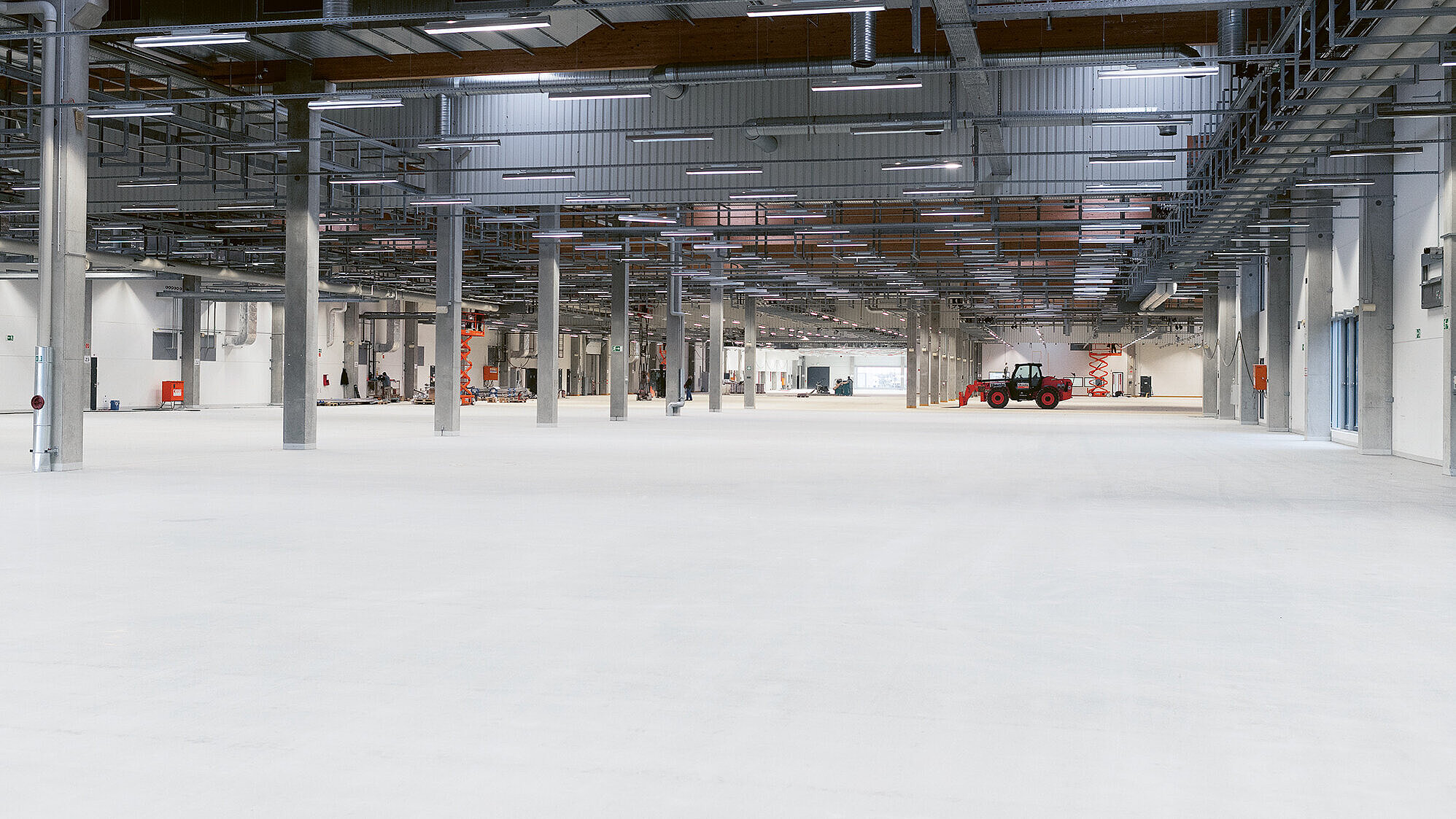Meyer Burger is an innovation leader in the PV industry. The research teams in Switzerland give insight into their formula for success. SmartWire Connection technology (SWCT) and HJT cell technology have been developed at the company headquarters in Thun and at Meyer Burger Research. Thanks to these innovations, Meyer Burger has a remarkable technological lead over competitors.
This lead is no reason to lean back and be satisfied. The Research & Development team, comprising a good 30 people, is already working on the next generation of modules. The highly efficient, cost-effective and extremely robust SmartWire Connection technology will remain the best electrical connection technology for the next cell generation, Gerhard Marti, Head of Module Development, is convinced. He and his team are currently researching how they can improve materials and construction methods.
Test modules are created by hand: Highly efficient cells are joined together with the utmost precision, interconnected with each other using special electrode materials. Further protective layers and the cover glass are placed on top and the plastics are polymerized and pressed in the laminator. There is an ongoing search for the ideal material compositions for the module to ensure that the sunlight hits the cell unhindered and that the cells are simultaneously encapsulated and protected in the best possible way.
Testing, testing, testing
Each module variant is then checked: The finished module is screened with electroluminescence, exposed to extreme temperatures from –40 °C to +85 °C and intense UV radiation. Testing also includes a load test as well as an endurance test of one month in the climate chamber. In Thun, all prototypes are checked up to six times instead of only once as prescribed. After all, the mature and mass-produced product must reliably supply electricity for 25 to 30 years under all weather and climate conditions.
"Full transparency, proximity and a shared corporate culture give us decisive advantages for further development.”
Christoph Gurtner, Research-Team, Thun
Historically, Meyer Burger has been a technology developer and machine builder for the PV industry. In Thun, the company continues to optimize manufacturing processes.
In Thun, the company also continues to optimize manufacturing processes, develop machines for the electrical contacting of solar cells and support the industrial production of series machines at Meyer Burger’s central machine manufacturing facility in Hohenstein-Ernstthal (Germany). Where possible, Meyer Burger cooperates with institutes, partners and suppliers. For the past two years, in-house engineers have been working on machines for processing the next generation of cells. The team is building prototypes for the future production of these new, significantly improved solar modules. In a single module, more than 2,000 electrical contact points are automatically laid and bonded.
Extremely valuable feedback
Feedback from the use of the machines and technologies in Meyer Burger’s own production is extremely valuable for practical research activities and generates higher development efficiency. Team member Christoph Gurtner says: “We look forward to receiving unvarnished feedback from our colleagues in Germany when the new machines are in continuous operation. Full transparency, proximity and a shared corporate culture give us decisive advantages for further development.”
